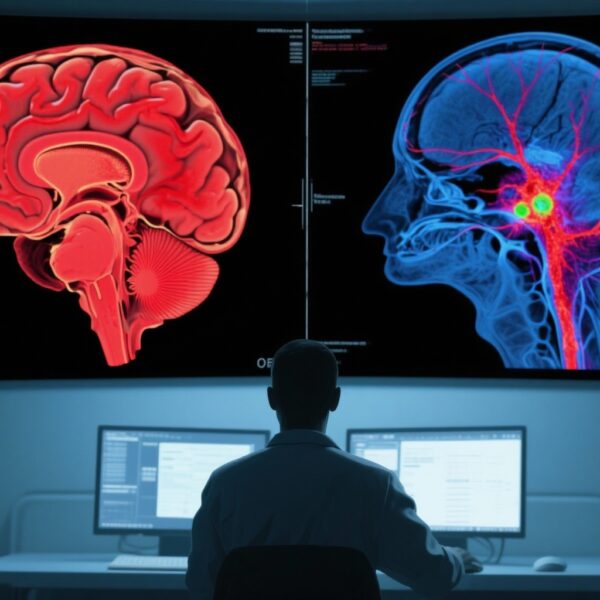Introduction: The New Era of AI in Drug Discovery
In October 2025, pharmaceutical giant Eli Lilly announced a groundbreaking collaboration with technology leader NVIDIA to deploy the most powerful AI supercomputer dedicated solely to pharmaceutical research. Hosted at a proprietary AI factory powered by NVIDIA’s DGX SuperPOD system—specifically the global premiere of their DGX B300—this unprecedented setup represents a monumental leap in computational resources for drug development. With 1,016 NVIDIA Blackwell Ultra GPUs operating in concert, the system achieves a staggering 9,000 petaflops of computing power, enabling scientists to accelerate research cycles beyond current limits.
This initiative underscores the convergence of artificial intelligence, genomics, molecular science, and bioinformatics to reshape drug discovery and personalized medicine. The AI factory’s capacity allows Eli Lilly’s scientists to train expansive biomedical foundational models and cutting-edge AI algorithms that were previously inconceivable in scale.
Challenges in Traditional Drug Development
Drug discovery has traditionally been a time-consuming and costly process fraught with scientific and technical bottlenecks. Developing a new medicine typically takes over a decade and costs billions, with a high failure rate at various stages—from target identification and molecular design to clinical trials.
A critical pain point is sifting through enormous chemical spaces and complex biological data to identify molecules with the potential to modulate disease pathways safely and effectively. Moreover, the variability in patient genetics and disease subtypes calls for personalized approaches, which add layers of complexity.
Scientific and Clinical Advances Enabled by AI Supercomputing
Eli Lilly’s AI factory harnesses high-performance AI to revolutionize multiple facets of pharmaceutical science. By powerfully integrating biological and chemical data, the system supports:
– Molecule Identification and Optimization: AI algorithms explore novel atomic structures and molecular conformations beyond known chemical libraries, revealing drug candidates unreachable by traditional methods.
– Large-scale Biomedical Model Training: The factory supports the training of foundational models incorporating millions of experimental and public datasets, refining prediction accuracy for molecular behavior and therapeutic effect.
– Genomics and Precision Medicine: Comprehensive whole-genome sequence analysis helps predict patient responses to therapies, enabling tailored treatment plans.
– Imaging-based Diagnostics: Using the open-source MONAI framework, AI accelerates analysis of medical imaging data from months to days, facilitating targeted intervention strategies.
– Clinical Trial Enhancement: Large language models trained within the AI factory streamline medical documentation, improving efficiency and data quality in trials.
– Biomarker Discovery and Gene Therapy: Novel biomarker identification and rational design of gene therapies for degenerative diseases are bolstered by the computational power.
This array of capabilities drastically shortens development timelines and opens doors to therapies customized to patient biology.
Collaborative Innovation Through Lilly TuneLab and Federated Learning
Eli Lilly’s AI platform, TuneLab, operationalizes these models by granting biotechnology collaborators controlled access to proprietary data-derived AI tools. Built on the NVIDIA FLARE federated learning architecture, TuneLab ensures strict data isolation and privacy while enabling model improvements driven by user feedback.
TuneLab uniquely bridges Eli Lilly’s $1 billion data assets with NVIDIA’s Clara open biomedical models, expanding the ecosystem for AI-driven drug discovery innovation globally.
Integrating AI into Drug Manufacturing and Supply Chain
Beyond research, AI supercomputing enhances pharmaceutical manufacturing and supply chain resilience through technologies like digital twins. Leveraging NVIDIA Omniverse and RTX PRO servers, Lilly can simulate and optimize production lines pre-implementation, reducing downtime risks and accelerating quality assurance.
Robotics powered by NVIDIA Isaac platforms facilitate automated quality inspections and component logistics, augmenting human labor and maintaining continuity in high-demand drug supplies.
Advanced AI agents, developed with NVIDIA NeMo software, enable real-time reasoning and planning in both physical labs and digital environments, driving innovation from molecular design to therapeutic testing.
Expert Perspectives and Future Implications
Thomas Fuchs, Eli Lilly’s Chief AI Officer, emphasizes that this AI factory is not just accelerating drug R&D but fundamentally reshaping the paradigm of how medicines are conceptualized and realized. Diogo Rau, Executive VP and Chief Information and Digital Officer, highlights the historic integration of scientific insight and high-performance computing as the catalyst for delivering therapies at scale to millions.
The AI-driven transformation portends new frontiers in biopharmaceutical innovation, optimizing both clinical outcomes and operational efficiency.
The Economic and Strategic Impact: Cementing Leadership in AI-Driven Pharma
The AI factory sets a new benchmark for US leadership in AI-integrated pharmaceutical manufacturing and research, supported by Eli Lilly’s $5 billion expansion plan. This includes multiple new production sites and a $4.5 billion advanced manufacturing hub in Indiana, creating thousands of high-skilled jobs.
Compared to the Cray supercomputers used by Eli Lilly in 1992, this new AI factory’s computational leap is extraordinary: a single Blackwell Ultra GPU matches the power of approximately 7 million Cray systems combined.
These investments also translate proprietary data from a competitive advantage into shared, intelligent assets that fuel ongoing innovation and economic growth.
Case Illustration: Transforming Patient Outcomes Through AI-Enhanced Discovery
Consider Sarah, a 45-year-old woman with a rare autoimmune disorder resistant to conventional treatments. Using Eli Lilly’s AI platform, researchers identified a novel antibody candidate optimized through molecular simulations that had eluded traditional screening. The AI-driven genomic analysis enabled tailoring this therapy to Sarah’s genetic profile, improving efficacy and minimizing side effects. Clinical trials were accelerated using AI-supported patient stratification and data analysis, bringing the promising treatment to Sarah faster than typical timelines.
Conclusion: The Dawn of a New Pharmaceutical Paradigm
Eli Lilly and NVIDIA’s collaboration epitomizes the transformative potential of AI-powered supercomputing in the pharmaceutical industry. By enabling faster, more precise drug discovery, personalized therapy optimization, and intelligent manufacturing, this initiative sets the stage for groundbreaking therapies accessible to diverse patient populations worldwide.
While challenges remain in data integration, regulatory adaptation, and cross-sector collaboration, the foundational infrastructure now established offers a scalable model for future innovation. As AI agents continue to augment human ingenuity, the synergy of biology and computation will define the next generation of medicine.
References
– NVIDIA Blog. “Eli Lilly Leverages NVIDIA AI Factory to Revolutionize Drug Discovery.” https://blogs.nvidia.com/blog/lilly-ai-factory-nvidia-blackwell-dgx-superpod/
– Topol, E.J. (2019). Deep Medicine: How Artificial Intelligence Can Make Healthcare Human Again. Basic Books.
– Jumper, J. et al. (2021). “Highly accurate protein structure prediction with AlphaFold.” Nature, 596(7873), 583–589.
– Wang, Y. et al. (2022). “AI-enhanced clinical imaging for improved diagnosis and treatment.” Nature Medicine, 28(9), 1836-1845.



